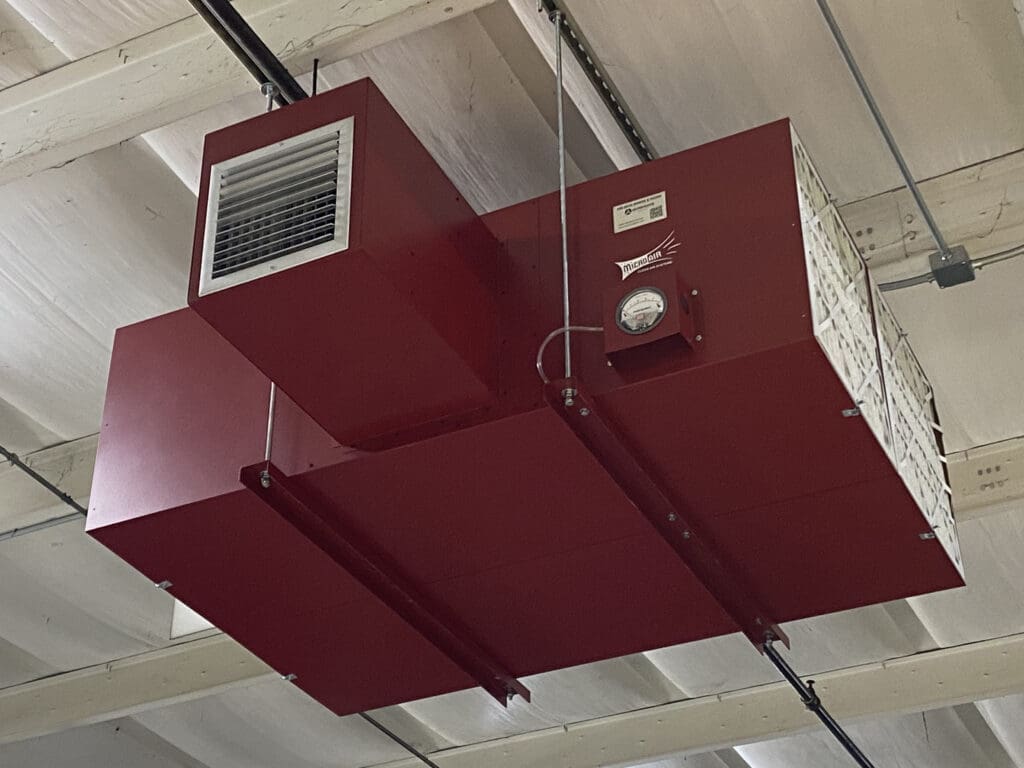
Air may be invisible, but it is never empty in industrial settings. Dust, fumes, vapors, and microscopic particles float through the air, often unnoticed until they become a problem. For manufacturers, poor air quality is not just a comfort issue. It is also a matter of safety, compliance, and operational efficiency. Industrial air purification plays a crucial role in ensuring that workers remain healthy, equipment operates at peak performance, and facilities meet the standards set by regulatory bodies.
This guide explores why clean air is essential in manufacturing, the risks industrial workers face, and the tangible benefits of a robust purification system backed by proven science.
In everyday life, fresh air helps us breathe more easily and feel better. In a factory or plant, however, the stakes are far higher. Manufacturing processes, ranging from welding and painting to chemical production and food processing, release pollutants that linger in the air if not properly addressed.
According to the World Health Organization (WHO), exposure to air pollution contributes to millions of premature deaths annually, with occupational exposure being a significant risk factor. Within the United States, the Occupational Safety and Health Administration (OSHA) sets standards to limit worker exposure to airborne contaminants. Still, harmful particles in confined workspaces make it critical for employers to actively manage air quality.
Clean air is not only a health requirement but also a regulatory necessity. Failing to meet OSHA standards can lead to fines, lawsuits, and reputational damage, making proactive investment in air purification a legal and ethical obligation.
Every industry faces unique air quality challenges, but several pollutants consistently pose problems in manufacturing settings.
Grinding, cutting, and sanding release fine dust particles that can settle deep into the lungs. Long-term exposure may lead to chronic conditions such as asthma, silicosis, and chronic obstructive pulmonary disease (COPD).
Paints, solvents, and adhesives emit volatile organic compounds (VOCs), which can irritate the eyes, nose, and throat and, with prolonged exposure, contribute to long-term organ damage.
Processes like welding generate metal fumes and gases, including carbon monoxide and ozone. Even short-term exposure can cause dizziness and nausea, while long-term exposure can increase the risk of neurological and cardiovascular disease.
In food and pharmaceutical manufacturing, bacteria, mold spores, and allergens can compromise worker health and product integrity.
Machining operations often release fine oil mists, accumulating in the lungs and on equipment surfaces, creating health risks and maintenance challenges.
Each of these hazards demonstrates why industrial air purification is not optional. It is essential.
Implementing a comprehensive air purification system provides benefits that extend beyond compliance. These benefits touch every aspect of manufacturing operations.
The most obvious advantage of air purification is reducing respiratory illness and long-term disease. Facilities safeguard employees from immediate discomfort and chronic conditions by filtering out dust, fumes, and biological contaminants. Healthy employees are more productive, experience fewer absences, and show higher overall job satisfaction.
Airborne contaminants do not only harm workers—they also damage equipment. Dust and oil mist can clog sensitive machinery, leading to frequent repairs and costly downtime. Clean air systems help extend equipment lifespans and maintain consistent production output.
OSHA regulations and local environmental standards require strict control of airborne contaminants. Facilities that adopt advanced industrial air purification systems are better equipped to meet these benchmarks, avoiding legal penalties and reinforcing a culture of compliance.
Contaminants in the air can compromise the integrity of manufactured goods. For industries such as food production, electronics, and pharmaceuticals, where purity is paramount, effective air purification ensures that products meet stringent quality standards.
Employees who know their employer prioritizes safety are more likely to remain loyal. A clean, comfortable workspace contributes to overall morale, reducing turnover and fostering a more engaged workforce.
Industry regulations and research consistently reinforce the need for air quality control. OSHA provides permissible exposure limits (PELs) for hazardous substances, while the National Institute for Occupational Safety and Health (NIOSH) develops recommended exposure limits to further guide employers.
The WHO emphasizes that lowering particulate matter exposure by even small increments can significantly improve population health outcomes. In a factory setting, these reductions translate directly to fewer workplace illnesses, lower healthcare costs, and a stronger workforce.
These data points underscore a critical truth: investing in industrial air purification is not merely a cost but a value-adding decision with measurable returns.
Not all purification systems are the same, and selecting the right one requires a clear understanding of your facility’s needs. Factors to consider include:
Working with experts ensures the system installed is practical and scalable as operations evolve.
Industrial air purification is not only a compliance requirement, but also a foundation for safety, efficiency, and long-term success. By addressing airborne hazards with advanced solutions, manufacturers can protect employees, extend the life of their equipment, and maintain product quality.
If your facility is ready to prioritize health and productivity, Environmental Air Technology provides tailored industrial air purification systems designed to meet the unique demands of manufacturing environments. Contact us today to learn how we can help create a cleaner, safer workspace for your team.